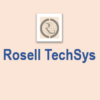In recent times, educational institutions are under pressure from multiple sides. The first and foremost pressure point is the rapid technological changes which is happening across all fields thereby creating a ever widening gap between what is taught and the expectation of the industry.
An interesting example is the possibility of arrival of mobile phones with 10 x zoom lens which will offer stiff competition to smaller DSLR cameras. A paradigm shift in how we use cameras is waiting to happen in this year of 2019.
Going forward, imagine if we were to get mobiles with 40x -50x zoom lenses.
Canon and Nikon would find it difficult to survive as they do not have the capabilities to be a mobile company nor they can do it at this stage. Recall, what happened to Kodak. Did we ever imagine that a company as big as it was could exit from the photography business?
If huge companies can be wiped out, why not the traditional educational institutions? A new college model can spring up giving stiff competition to private educational institutions. In fact, core advisers to the Govt. of India are looking at whether the Govt. Colleges spread all over India can be the hubs for starting new age colleges.
The convergence of technologies is bringing research and earning opportunities to the doorstep of individuals and impacting the relationships of inventors and investors.
As such rapid changes happen, research wings of industry and educational institutes have to recognise this and gear up to keep up their rankings and compete.
The Govt.s of mature and growing economies have recognised this and put in place mechanisms to tap the young talents with encouragement, funding and incubation facilities.
All these stages have to happen in incubators (BioNests in case of BioTech), hosted in educational institutions.
The responsibility of managing and running a successful incubator rests on the host institutions. Host institutions, across the country are facing a challenging task. On one hand, they have young students who are eager to ride the startup wave.
On the other hand, they have an incubator which are just beginning out and can succeed only if it is managed as a startup of startups, i.e., a centre of creative entrepreneurial ideas.
Simultaneously, educational institutions are also expected to increase their publications and patent profile which leads to a better ranking.
Having interacted with educational institutions all my professional life, I can say with certain amount confidence and responsibility that the host institutions are finding this twin responsibilities quite challenging.
I have been asked “How to meet this challenge?” and I have suggested to a few institutions that they have to identify thrust areas.
Most of the learned Professors have received this suggestion very positively.
So, what is a thrust area?
A thrust area is a specific area of technology or science or agriculture, or an assemblage of technologies and science areas which clearly indicate to the stakeholders said areas are of priority to the institution.
Understanding the role of Thrust Area
Refer the picture.
Due to the recent developments and the proactive role of the NDA Govt. in promoting startups, IPR, and research, host institutions are appearing more holistic in the approach towards growth. Prior to this period of strict procedures being implemented by the monitoring agencies, the educational institutions were ensuring the student community was kept happy while confirming to monitoring agencies academic requirements.
The situation has vastly changed and this is reflected in the accompanying picture.
You will see that Thrust Areas affect all the three major functions of educational institutions today. As more IPR are created in the institution in specific thrust areas, academic excellence is achieved in the thrust areas, and the startups springing in the incubation center will have a fertile ground to sprout. Prof. Udayshankar, who was my predecessor at a STEP incubator used the word Sprouts during his stint.
Host educational institutions will find it easier to identify the industry clusters to connect with.
Students of this day, who are much more exposed to latest developments, will be willing to join institutions which are more rounded and focused in their approach to growth and serving the society.
It is needless to say getting premium placements will be a reality for more colleges, as the students in such institutions are exposed to an advanced knowledge levels thanks to synergies of effort.
What are the benefits of having thrust areas?
The first benefit of a thrust area is to convey a message to all concerned that institutional energies are going to be focused in a specific list of areas and those who intend to grow and succeed are advised to invest their time and energies in those areas.
The other benefits are students know areas to focus on for their projects, the management can work on getting funds from DST and DBT to add infrastructure in the thrust areas providing the necessary support, company tie-ups can be focused in these areas, research papers can be focused in thrust areas.
How should a thrust area be selected?
The following are some of the rules to be kept in mind to maximise the benefits of thrust areas in a host institution:
- Take stock of the specialisation inventory of faculty – remember without support of faculty incubation facilities will find it difficult to succeed and prosper
- Consider the existing infrastructure of the institution
- Factor in the industry ecosystem surrounding of the host institution
- Talk to the alumni and check out the industry majority of them are in
- Talk to select industry experts
- Use your own assessment and judgement
Is there anything else a host institution can do to maximise the benefits of a thrust area?
Yes, there is. Educational host institutions can have a digital strategy. A Digital strategy will enable the institution to unleash and unlock the talents and potential of the students of the institutions.
This can be done with least investments and help the institution in promoting their own institution also.
Further, it brings all students on to a single platform and create an intellectually stimulating atmosphere among students from different branches and from different years.
Smart Institutions can formulate a strategy to create their own thrust area data pyramids and leverage for digital marketing initiatives.
What happens if there are no thrust areas?
Having no thrust areas will lead to dilution of effort, lack of direction, and general despondency. This can have disastrous effect in the long run as competing with other institutions and scoring well in monitoring authorities evaluation exercises will become difficult.
Startups and Thrust Areas
As we know Incubators are hosted in host institutions. Normally, most of the incubators (medical or technology based) do the marketing to get startups hosted in their incubators.
In the course of marketing of the incubator, reputation of the host institutions and its capabilities also play a role. Achievements of the host institutions in today’s context and relevance play a major part in attracting startups. Achievements (patents and publications) and the resulting expertise, while advancing the ranking of the institution, also play a major role in providing scientific acceleration and business acceleration mentoring to startups.
In case, you like this article, kindly share it.
If your institution chooses to implement the Thrust Area Policy, be kind enough to let me know! I will be happy to know.

















